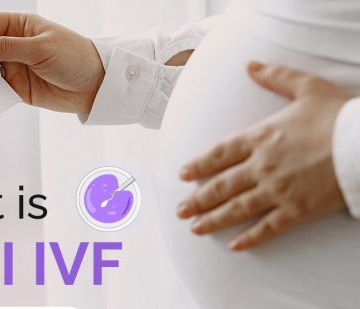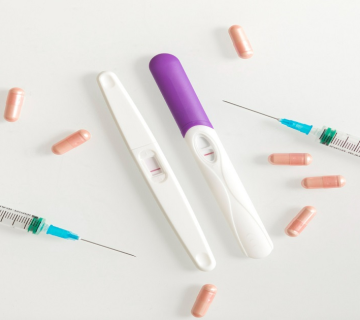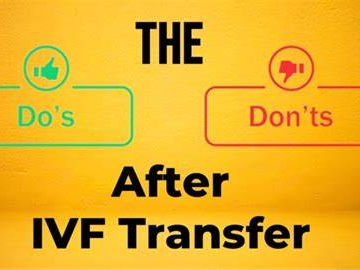
The Ultimate Guide to Deciding How Many Embryos to Transfer During IVF
Deciding how many embryos to transfer during an IVF cycle is a big moment. It’s not just a number—it’s a choice that could shape your family, your health, and your future. Think of it like planting seeds in a garden. Each embryo is a tiny possibility, but how many you plant at once changes the odds of success and the risks you’re taking. Too few, and you might wait longer for a bloom. Too many, and you could end up with more than you planned for, along with some unexpected challenges.
This guide is here to help you figure it all out. We’ll break down the science, weigh the pros and cons, and tackle the stuff you might not find in other articles—like how this decision affects your wallet, your emotions, and even your future kids. Whether you’re new to IVF or gearing up for a transfer, we’ve got you covered with clear info, practical tips, and the latest research. Let’s dig in!
Understanding Embryo Quality—What Makes a Winner?
Before you decide how many embryos to transfer, you need to know what makes an embryo a good bet. Not every embryo has the same shot at becoming a baby, and picking the right one (or ones) can make all the difference. Clinics look at three main things to figure this out: genetic testing, how the embryo looks, and how fast it grows.
Genetic Testing (PGT-A)—The DNA Check
-
- What It Is: Preimplantation Genetic Testing for Aneuploidy (PGT-A) is like a DNA health check. It counts the chromosomes in an embryo to see if there are 46—the magic number for a healthy baby. Too many or too few (called aneuploid) can mean trouble, like miscarriage or no pregnancy at all.
-
- Why It Matters: Embryos with the right chromosomes (euploid) have a 50-60% chance of turning into a baby, compared to about 30% for untested ones. That’s a big jump!
-
- The Catch: It’s not perfect. Sometimes the test gets it wrong, and it doesn’t guarantee success. Plus, it’s pricey (around $3,000-$5,000 extra) and isn’t allowed everywhere.
Morphology—Judging by Looks
-
- What It Is: Embryologists play detective with a microscope, grading embryos based on their appearance. For early embryos (Day 3), they check how many cells there are and if they’re even. For blastocysts (Day 5 or 6), they look at the parts that’ll become the baby and placenta.
-
- Why It Matters: A good-looking embryo is more likely to stick around. Studies show high-grade blastocysts can have up to a 65% implantation rate.
-
- The Catch: Looks aren’t everything. A perfect embryo might still have hidden genetic flaws.
Development Speed—Timing Is Key
-
- What It Is: Embryos that hit milestones fast—like becoming a blastocyst by Day 5—tend to be stronger. Slower ones (Day 6 or 7) can still work, but the odds drop a bit.
-
- Why It Matters: Research from 2021 in Human Reproduction found Day 5 blastocysts have a 10-15% higher success rate than Day 6 ones.
-
- The Catch: Speed isn’t the whole story. Some late bloomers still make healthy babies.
Expert Insight: “Genetic testing is the gold standard, but don’t sleep on morphology and timing. They’re like the resume and cover letter of your embryo—important clues, but not the full picture,” says Dr. Orion Nightingale, a top fertility specialist.
Practical Tip: Ask your clinic for a report card on your embryos—PGT-A results, grades, and development stage. It’s like getting the stats before picking your team.
Single vs. Multiple Embryo Transfers—What’s the Trade-Off?
Here’s where it gets real: Do you transfer one embryo or more? It’s the million-dollar question in IVF, and both paths have upsides and downsides. Let’s break it down with some hard numbers and real talk.
Single Embryo Transfer (SET)—One at a Time
-
- What It Is: Putting one embryo into your uterus per cycle.
-
- ✔️ Pros:
-
- Cuts the chance of twins or triplets to almost zero (1-2%).
-
- Safer for you and the baby—no big risks like early delivery or low birth weight.
-
- Easier pregnancy, less stress on your body.
-
- ✔️ Pros:
-
- ❌ Cons:
-
- Might take more tries to get pregnant, which can cost time and money.
-
- Success per transfer is a bit lower than with two embryos.
-
- ❌ Cons:
Multiple Embryo Transfer (MET)—Doubling Up
-
- What It Is: Transferring two or more embryos at once.
-
- ✔️ Pros:
-
- Boosts your odds of pregnancy per try (up to 10-15% higher than SET).
-
- Could mean fewer cycles, saving you cash and heartache.
-
- ✔️ Pros:
-
- ❌ Cons:
-
- Twins or more happen a lot—25-30% with two embryos.
-
- Bigger risks: preterm birth (60% of twins), low birth weight, and health issues for mom and babies.
-
- ❌ Cons:
The Numbers Don’t Lie
Check out this table based on 2022 CDC data for women under 35 using fresh embryos:
| Transfer Type | Live Birth Rate per Transfer | Twin Rate | Triplet+ Rate |
|---|---|---|---|
| Single Embryo | 38% | 1% | 0% |
| Double Embryo | 47% | 28% | 2% |
What It Means: Two embryos give you a better shot at pregnancy, but nearly 1 in 3 end up with twins. That’s a lot to think about—double the diapers, double the doctor visits, and double the risks.
Real-World Example: Imagine you’re baking cookies. One big scoop of dough might bake perfectly, but two could overflow the tray and make a mess. That’s SET vs. MET in a nutshell.
Practical Tip: If you’ve got a top-notch embryo (euploid, high-grade, Day 5), single transfer is often the smart move. Why roll the dice on twins when one could do the trick?
What Affects Your Magic Number?
There’s no cookie-cutter answer to how many embryos you should transfer. It’s all about you—your body, your embryos, and your life. Here’s a rundown of the big factors to chew on.
Your Age
-
- Under 35: Your eggs are usually in prime shape, so one embryo often does the job. Success rates for SET can hit 40% here.
-
- Over 38: Egg quality dips, so some doctors suggest two embryos to up your odds. But a 2023 study in Fertility and Sterility found SET still works well if the embryo’s genetically tested.
Embryo Quality
-
- High Quality: A euploid, top-grade blastocyst? One might be plenty.
-
- Lower Quality: If your embryos aren’t aces, transferring two could hedge your bets—just know the risks.
Your Fertility Story
-
- Past Fails: Multiple flops might push you toward transferring more.
-
- Miscarriages: A single transfer could lower stress and risk if losses are a pattern.
How Many Embryos You’ve Got
-
- Lots to Spare: With a freezer full, you can go one-by-one without pressure.
-
- Just a Few: If you’re down to your last shots, two might feel like a safer play.
Your Risk Comfort Zone
-
- Risk-Averse?: Stick to one to keep things simple and safe.
-
- All In?: If twins don’t scare you and time’s tight, two might appeal.
Checklist for Your Doctor Chat:
-
- ✔️ How old am I, and how does that affect my odds?
-
- ✔️ What’s the scoop on my embryos—grades, testing, stage?
-
- ✔️ What’s my history saying—any red flags?
-
- ✔️ How many embryos do we have in the bank?
-
- ✔️ What’s your take on my risk level?
Practical Tip: Write down your answers to these questions before your appointment. It’ll help you and your doctor zero in on the best plan.
Genetic Testing—Your Secret Weapon?
Genetic testing (PGT-A) is like having X-ray vision for your embryos. It’s not cheap or mandatory, but it can change the game when picking how many to transfer. Let’s unpack it.
How It Works
-
- A tiny sample gets snipped from the embryo (usually Day 5 or 6).
-
- Labs check if it’s got 46 chromosomes—normal (euploid), abnormal (aneuploid), or a mix (mosaic).
Why It’s a Big Deal
-
- Better Odds: Euploid embryos have a 50-60% live birth rate, per a 2022 study in Nature Medicine.
-
- Fewer Losses: Aneuploidy causes 60% of miscarriages—PGT-A weeds those out.
-
- Single Transfer Confidence: Knowing you’ve got a winner can make SET feel less risky.
The Downsides
-
- Cost: Adds $3,000-$5,000 to your bill.
-
- Not Foolproof: Misreads happen, and even euploid embryos can fail.
-
- Mosaic Mystery: Mixed embryos can sometimes work, but it’s a gray area—only 20-30% lead to babies, says recent research.
Expert Insight: “PGT-A is powerful, but it’s not a crystal ball. I’ve seen perfect embryos fail and ‘imperfect’ ones thrive. It’s one piece of the puzzle,” says Dr. Ophelia Moon, a fertility guru.
Practical Tip: If you’re over 35 or have had miscarriages, ask about PGT-A. It might tip the scales toward transferring just one embryo with confidence.
Why Doctors Don’t Always Agree
Ever wonder why one doctor says “one embryo” and another says “two”? It’s not random—clinics and docs have different vibes and goals. Here’s the scoop.
Clinic Style
-
- Safety First: Some push single transfers to keep risks low.
-
- Success Driven: Others lean on multiple transfers to bump up pregnancy rates.
Doctor Experience
-
- Seasoned Pros: Might trust SET more, thanks to years of seeing it work.
-
- Newer Docs: Could favor two embryos to play it safe on stats.
What Patients Say
-
- A 2023 FertilityIQ survey found:
-
- 39% didn’t hear about risks to babies from multiple transfers.
-
- 23% missed the memo on risks to themselves.
-
- A 2023 FertilityIQ survey found:
-
- Feeling rushed? You’re more likely to go with two.
Real Story: “My first doctor pushed for two embryos without explaining twins. My second laid out all the risks, and I chose one. Wish I’d asked more questions sooner,” says Jen, an IVF mom.
Practical Tip: Grill your doctor on why they’re suggesting a number. If it doesn’t click with you, shop around for a second opinion.
Why the U.S. Loves Multiple Transfers
In places like Sweden, single transfers are the rule—95% of IVF cycles stick to one. In the U.S.? Over 70% involve two or more. What gives?
Cash Talks
-
- No Free Ride: Unlike countries with free IVF, Americans pay big—$15,000+ per cycle. That pushes folks to “get it done” fast with multiple embryos.
-
- Insurance Gaps: Most plans don’t cover IVF fully, so patients bet on two to avoid extra cycles.
Clinic Showdowns
-
- Success Stats: Clinics flaunt live birth rates to win patients. Two embryos juice those numbers, even if it means more twins.
-
- Pressure Cooker: You might pick a clinic with “better” odds, not knowing the risks behind them.
Patient Push
-
- Time Crunch: After years of trying, some want results now and roll with two.
-
- Info Gap: Not everyone gets the full twin-risk rundown.
Data Point: U.S. IVF twin rates hit 30%, vs. 5% in single-transfer-heavy countries, per 2022 CDC stats.
Practical Tip: Ask your clinic for their single vs. multiple transfer success rates—not just overall numbers. It’ll show you the real picture.
The Emotional Rollercoaster
This isn’t just about science—it’s about your heart. Deciding how many embryos to transfer can feel like a tug-of-war between hope and fear.
What You Might Feel
-
- Scared It Won’t Work: After all the shots and tears, a failed transfer stings.
-
- Pressure Piles Up: Family asking “When’s the baby?” doesn’t help.
-
- Regret Radar: What if you pick one and wish you’d done two—or vice versa?
How to Handle It
-
- Team Up: Talk it out with your partner. Two heads are better than one.
-
- Get Support: Clinics often have counselors—use them!
-
- Find Your People: Online groups or friends who’ve been there can lift you up.
Patient Voice: “I agonized over one or two. My gut said one, but my fear said two. Chatting with other IVF moms online gave me the guts to trust my instinct,” says Priya, now a mom of one.
Practical Tip: Write down your fears and hopes. Seeing them on paper can make the choice less foggy.
Money Matters—What’s This Gonna Cost?
IVF isn’t cheap, and how many embryos you transfer can hit your bank account in different ways. Let’s crunch the numbers.
Transfer Costs
-
- One Cycle: $3,000-$5,000 per transfer, plus meds and fees.
-
- SET Strategy: Might need 2-3 tries = $6,000-$15,000.
-
- MET Strategy: One try might do it, but…
Multiple Pregnancy Costs
-
- Twins: Delivery and care can top $100,000 if complications hit (60% chance, says 2021 Obstetrics & Gynecology).
-
- Long Haul: Preemies might need extra medical help—think thousands more.
Insurance Check
-
- Coverage: Some plans cap transfers but don’t touch twin costs.
-
- Out-of-Pocket: No insurance? You’re footing the whole bill.
Table: Cost Comparison
| Scenario | Upfront Cost | Potential Extra Costs |
|---|---|---|
| SET (2 cycles) | $6,000-$10,000 | $0-$10,000 (if fails) |
| MET (1 cycle, twins) | $3,000-$5,000 | $50,000-$100,000+ |
Practical Tip: Map out both paths with your budget. Twins might save cycles but could cost way more if things get tricky.
The Ethics Angle—What’s Right?
This decision isn’t just medical—it’s moral. Here’s what’s worth pondering.
Success vs. Safety
-
- The Dilemma: More embryos = higher odds, but also higher risks. Is that fair to you or your future kids?
-
- The Balance: How much risk is too much for a chance at your dream?
Embryo Leftovers
-
- Freezing: One-at-a-time means extras to store—what’s next for them?
-
- Tough Calls: Donating, discarding, or keeping them can weigh heavy.
Doctor Duty
-
- Their Job: Guide you safely, not just chase success stats.
-
- The Gray Zone: Guidelines push for fewer multiples, but it’s not law.
Expert Insight: “We’re here to build families, not risks. It’s a tightrope between your hopes and what’s best for everyone,” says Dr. Caspian Sterling, a fertility ethics pro.
Practical Tip: Ask yourself: “What feels right for me, not just what works?” It’s your call, not just your doctor’s.
Kids’ Health—What’s the Long Game?
How many embryos you transfer doesn’t just affect if you get pregnant—it can shape your kids’ lives. Here’s what science says.
Singletons vs. Multiples
-
- Early Arrival: Twins are 60% likely to come before 37 weeks; singletons, just 10% (Pediatrics, 2022).
-
- Tiny Babies: Low birth weight hits 50% of twins, vs. 6% of singletons.
-
- Bigger Risks: Cerebral palsy is 5 times higher in twins.
Down the Road
-
- Brain Stuff: Twins have a slight IQ dip (3-5 points) and more learning hiccups, per a 2020 JAMA study.
-
- Good News: Most twins turn out fine—millions of families prove it.
What It Means: Twins can be a joy, but the risks are real. Single transfers stack the health deck in your kid’s favor.
Practical Tip: Picture your kid at 5—do you want one thriving or two possibly struggling? It’s a lens to decide through.
YourDecision Playbook—Step by Step
Ready to pick your number? Here’s a no-stress guide to get you there.
-
- Know Your Embryos
-
- Get the rundown: grades, testing, stage.
-
- Ask: “Which ones are my MVPs?”
-
- Know Your Embryos
-
- Gauge Your Risk
-
- Twins okay with you? Or safer the better?
-
- Think: “Can I handle the what-ifs?”
-
- Gauge Your Risk
-
- Check Your Wallet
-
- More tries or one big shot—which fits your budget?
-
- Ask: “What’s my max spend?”
-
- Check Your Wallet
-
- Quiz Your Doctor
-
- “Why this number for me?”
-
- “What’s worked for patients like me?”
-
- Quiz Your Doctor
-
- Feel It Out
-
- Success now or safety first—what’s your vibe?
-
- Reflect: “What’s my gut saying?”
-
- Feel It Out
-
- Lock It In
-
- Agree with your partner.
-
- Trust your homework and heart.
-
- Lock It In
Flowchart Fun:
-
- Start → Got a euploid embryo? → Yes → SET → No → Age under 35? → Yes → SET → No → Consider MET.
Practical Tip: Sleep on it after your doctor chat. A clear head seals the deal.
Wrapping It Up—You’ve Got the Power
Deciding how many embryos to transfer is your moment to shine. It’s not just about odds or risks—it’s about what you want for your family. With the facts, the feelings, and a solid plan, you’re ready to choose with confidence.
You’re not in this alone. Your doctor, your partner, and stories from folks like you are all part of the team. Take your time, ask the big questions, and trust that every step is bringing you closer to that baby you’ve been dreaming of. You’re stronger than you know—go make it happen!
Get Involved—What’s Your Take?
-
- Quick Quiz: If you’re prepping for a transfer, what’s swaying you most—success rates, risks, or costs? Drop your answer below!
-
- Your Story: Transferred one or more? Share how you decided—we’d love to hear it.
- Ask Away: Got a question this guide didn’t cover? Hit us up in the comments!




No comment